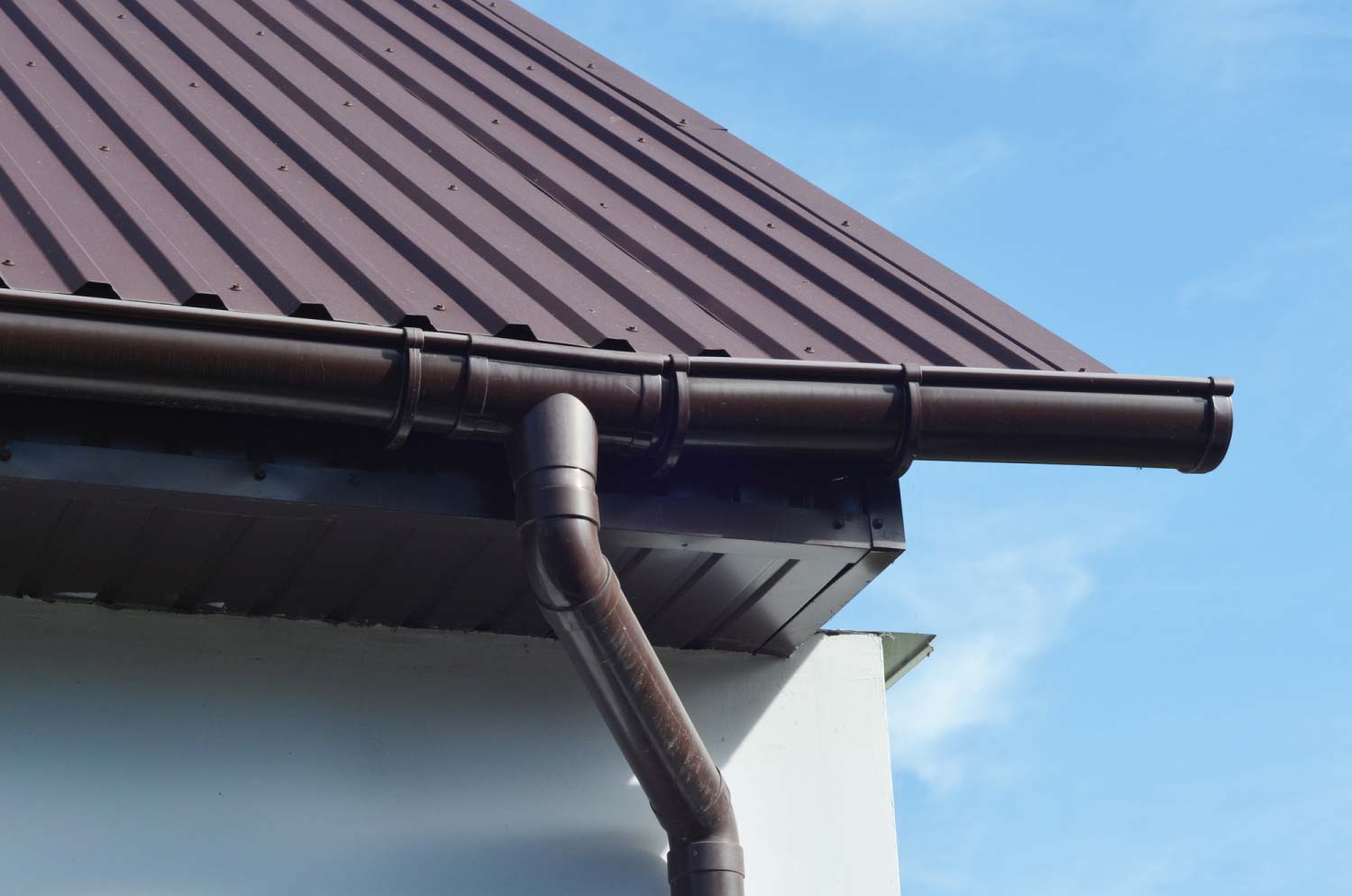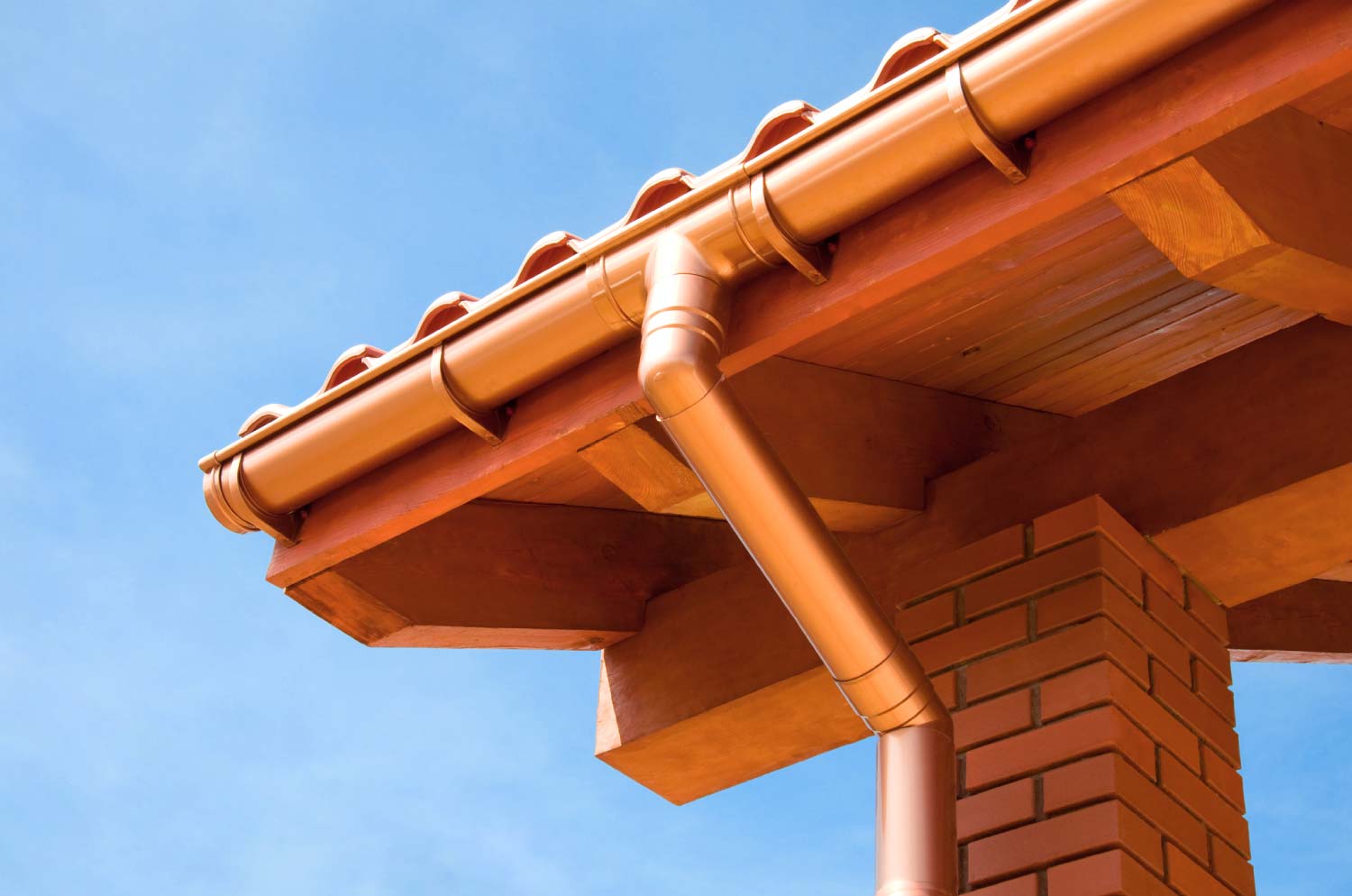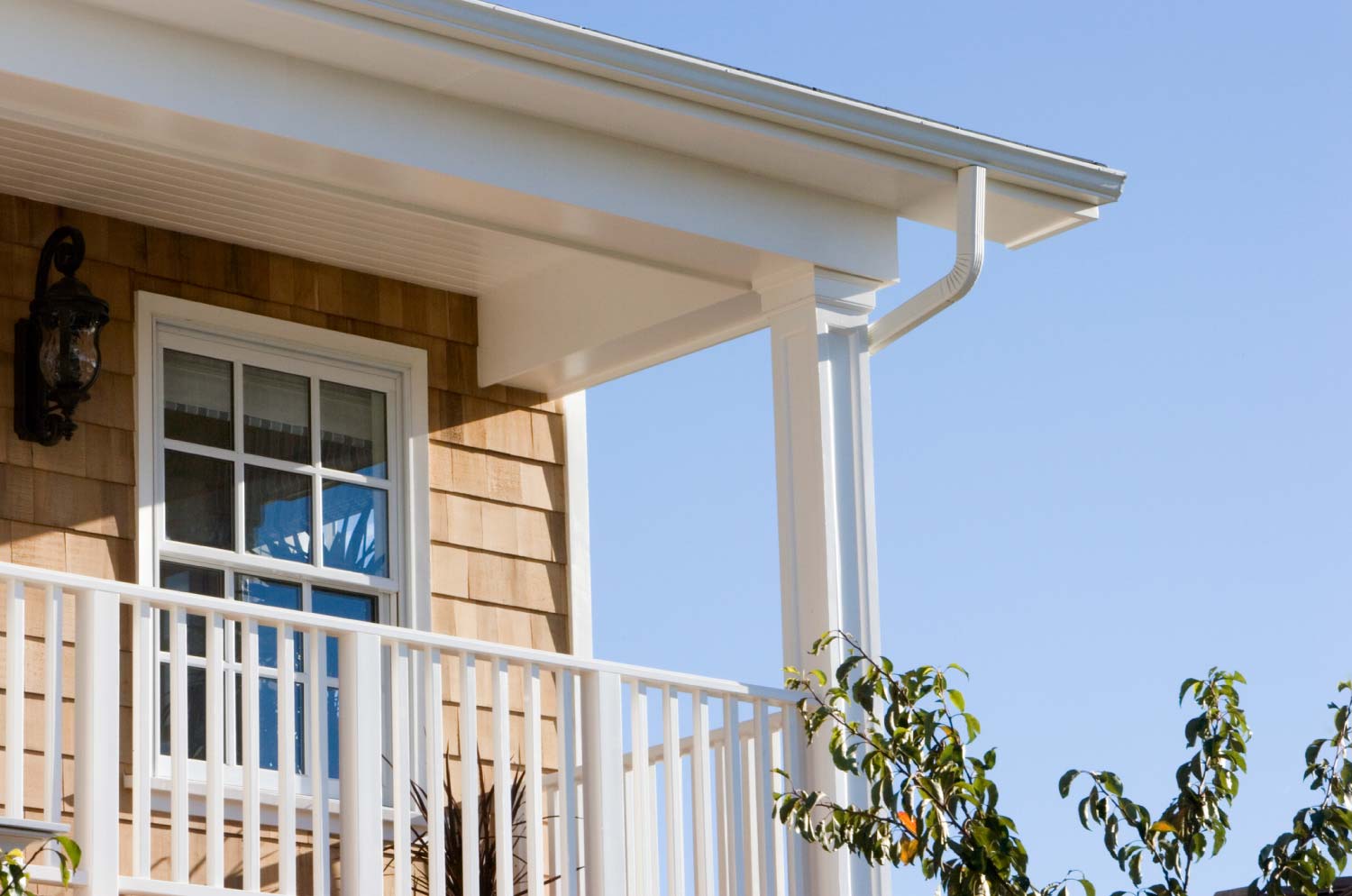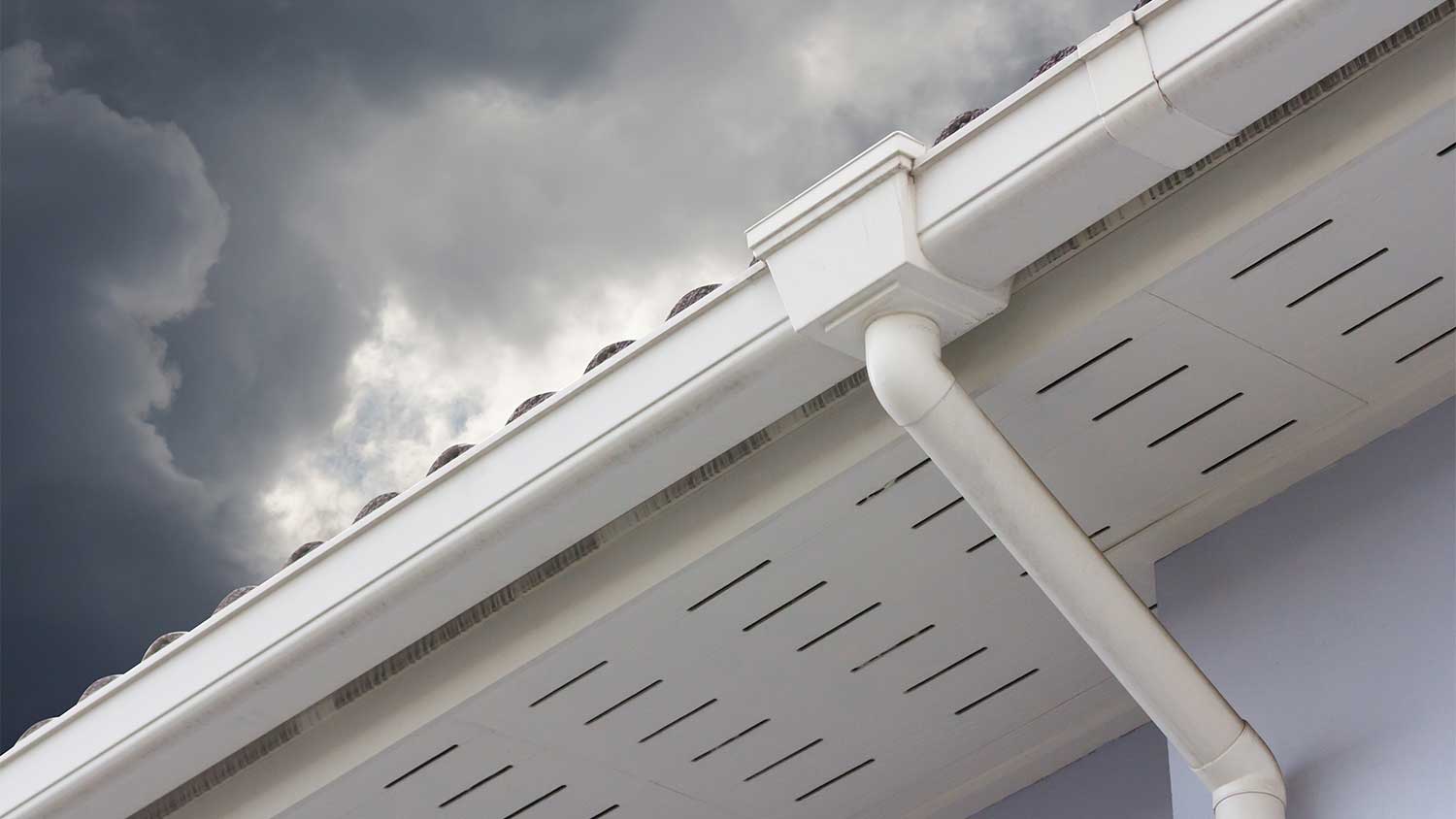What Are the Different Types of Gutters? [2025 Guide]
Get to know gutters for all types of homes


A gutter system is essential for channeling water away from a home's foundation before it has time to cause mold, mildew, and cracks. While all gutters have the same function, homeowners can choose from a variety of styles and materials when selecting the right gutters. With average gutter installation costs ranging from $624 to $1,707, getting the right gutters is something that can pay off for years to come. This guide covers the different types of gutters to consider.
Types of Gutters
When gutter shopping, homeowners will quickly learn that there are several options. The first choice often comes down to seamless versus sectional gutters. Due to their lower price and easier installation, precut sectional gutters are the more popular option. Seamless gutters are fitted specifically to your home. While this makes them more expensive, it also enhances their durability. Here's a look at the other choices homeowners will need to consider.
Half-round
Identified by their semicircular design with a curved lip, half-round gutters are commonly used for historic homes. Some homeowner associations and historical societies actually require them! This is also a popular option for brick homes. Half-round gutters have 5-inch and 6-inch widths.
Pros
Very attractive
Durable
Perform beautifully in heavy rain
Cons
Generally requires professional installation
The design is more vulnerable to debris accumulation
Requires more maintenance
K-style
The K-style gutter is the most common gutter on American homes. This gutter can have a 5-inch or 6-inch width. While DIY installation is possible with K-style gutters, it's necessary to nail these gutters into the fascia without using brackets.
Pros
Easy to find because they are popular
Lower price than other options
No brackets needed
Cons
Angles make these gutters more difficult to clean
Box-style
Box-style gutters aren't usually installed on homes. With their oversized design, they are intended to handle heavy rain at commercial or industrial buildings. However, they may be appropriate on some specialty houses. Box-style gutters have 7-inch or 8-inch widths.
Pros
Extremely durable
Handles heavy rains
Cons
Goes under a roof's shingles
Must be installed when a home is being built
Much more expensive than other options
Top Gutter Materials
Although aluminum gutters are the most common choice when it comes to gutter materials, you actually have a good amount of choices available, including copper, steel, and even zinc.
Take a look at the top gutter materials and their average gutter replacement cost, so you can decide what’s right for your home.
Aluminum

With options of seamed and seamless, aluminum gutters have long been the rain gutters of choice for their low price and long life. These gutters come in three different thicknesses, 0.025 inch, 0.027 inch, and 0.032 inch. Though the thinner material is the less costly option, it also dents and bends much more easily.
“Aluminum gutters are the most popular option because of the quality of materials and overall affordability,” says Olivia McCartney of Artisan Quality Roofing. “Homeowners also like them because they can choose from a wide range of color options.”
You can find 10-foot pieces of aluminum gutters at home improvement stores for between $5 and $10 per linear foot, and they cost about $7 to $15 per linear foot to have them professionally installed.
Aluminum gutters are weatherproof and rust-proof and come in a wide variety of colors. They can last up to 25 years but are also prone to bending or denting.
Copper

With their beautiful glow and long life, copper gutters can be a gorgeous addition to any home. However, they are a pricier option, coming in at $15 to $25 per linear foot for material alone. These gutters can’t be DIY installed, which contributes to their higher price.
On the positive side, they are resistant to high heat and the coldest temperatures and can last more than 50 years once they’re on. Plus, many homeowners find the aesthetic to be unique and a standout feature of their home.
If your goal is to avoid a future gutter removal project at all costs, copper is the way to go.
Steel
Galvanized steel gutters are super strong but prone to rust and very heavy. Although they’re designed not to rust, they usually start to show signs of oxidation in 10 to 15 years.
The alternative to galvanized steel is stainless steel, which won’t rust but is significantly more expensive than the galvanized alternative. One thing to keep in mind—steel gutters can be noisy in the rain.
Steel gutters are very heavy, so hiring a professional is the way to go. Professionally installed galvanized steel gutters cost $8 to $13 per linear foot, and professionally installed stainless steel gutters run $16 to $20 per linear foot.
Both types are on the most costly end of the spectrum, but they do well in all types of weather and are very sturdy.
Vinyl

If you’re looking for gutters that you can DIY, vinyl is your best option. Vinyl gutters are very lightweight, snap together, and are easy to cut. They’re also the most inexpensive gutter option at $2 to $4 per linear foot if you’re DIY-ing and up to $6 per linear foot for a professional installation.
On the negative side, vinyl tends to fade and become brittle in the sunlight, making it a less durable product than the others. If you live in a milder climate, you may get a reasonable amount of time out of vinyl gutters, but for areas that see a lot of wind, rain, snow, or dry heat, you probably want to opt for a sturdier material.
The good news is that you can paint your gutters if they’re made from vinyl (the same is true for metal gutters, too) to give them a fresh look.
Zinc

While the most expensive gutter material at $15 to $40 per linear foot, zinc gutters can also last up to 50 years. They start off in a dull gray, but with oxidation, the severe appearance lightens up over time.
You have to get zinc gutters professionally installed because they have to be welded together, and they’re usually seen on historical or very expensive homes. Zinc doesn’t rust, fade, or warp in the way some other materials do, so if you have the budget and are looking for a long-lasting option, it’s a good choice. If you live in a coastal area, though, Zinc is not a good option, as it’s vulnerable to acidic rain and runoff.
Wood Gutters

Another rare option, wood gutters are usually made from cedar, fir, redwood, or other long-lasting woods. They cost $20 to $30 per linear foot. They give homes a rustic look, but their lack of longevity, very specific style, and high price means homeowners tend to go a different direction.
No Gutters
If you’re interested in bypassing gutters altogether, sets of angled louvers that break up sheets of water so they scatter to the ground are a common gutter alternative.
Gutter Styles and Terminology
The bent pieces, end caps, and each little piece of the gutter have different names, including:
Downspout elbow
Box miters
Strip miters
Speed screw hangers
A elbow
B elbow
30 degree elbow
Downspout extension
Downspout adapter
Pipe bands
End caps
Ferrules
Hangers
Mitered corner
Pipe cleats
Frequently Asked Questions
Vinyl is the cheapest gutter material, averaging around $3 per linear foot. They’re more affordable than other materials because they’re easier to install and more lightweight—which, unfortunately, also makes them less durable. But if you live in an area with a relatively mild climate throughout the year, vinyl should serve your home well for over a decade.
Copper gutters are naturally rust and warp-resistant, making them the most durable gutters available on the market. With a solid maintenance schedule, copper gutters can last anywhere from 50 to 100 years compared to the average gutter life span of around 20. But this durability comes with a much higher cost that may be out of reach for most homeowners. In this case, aluminum gutters are a good secondary option in terms of durability and affordability.
If you'd like to get a quote for a new gutter installation, there are two ways to go about the process. Some companies specialize exclusively in installing gutter systems and gutter guards. In addition, you can contact a local roofing company that also offers gutter services. Be sure to ask any gutter pro you contact if they can also provide regular gutter cleaning and maintenance following installation.





- What Are Seamless Gutters and Are They Right for Your Home?
- How Long Do Gutters Last? Learn When Should Your Gutters Be Replaced
- Which Is Best for Your Home: Vinyl vs. Aluminum Gutters
- 3 Best Types of Gutters for Metal Roofs
- Pros and Cons of Vinyl Gutters
- Types of Gutters: What Is Right for Your Home?
- 5 Reasons for Overflowing Gutters and How To Fix It
- Why Your Gutters Are Pulling Away (and How to Fix Them)
- Seamless Gutters vs. Regular Gutters: Which One Should You Choose?
- 8 Common Metal Roof Gutter Problems











